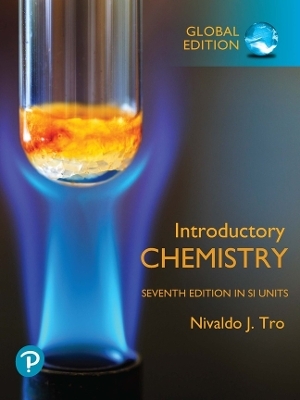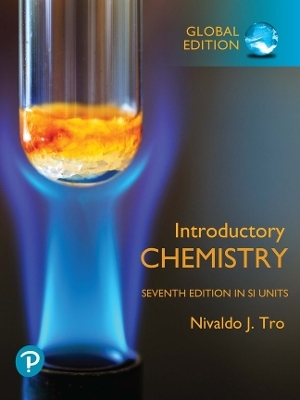
Chemistry in Alternative Reaction Media
John Wiley & Sons Inc (Hersteller)
978-0-470-86966-6 (ISBN)
- Keine Verlagsinformationen verfügbar
- Artikel merken
Dave J. Adams is the author of Chemistry In Alternative Reaction Media, published by Wiley. Paul J. Dyson is the author of Chemistry In Alternative Reaction Media, published by Wiley. Stewart J. Tavener is the author of Chemistry In Alternative Reaction Media, published by Wiley.
Preface. Abbreviations and Acronyms. 1 Chemistry in Alternative Reaction Media. 1.1 Economic and Political Considerations. 1.2 Why Do Things Dissolve? 1.3 Solvent Properties and Solvent Classification. 1.3.1 Density. 1.3.2 Mass Transport. 1.3.3 Boiling Point, Melting Point and Volatility. 1.3.4 Solvents as Heat-Transfer Media. 1.3.5 Cohesive Pressure, Internal Pressure, and Solubility Parameter. 1.4 Solvent Polarity. 1.4.1 Dipole Moment and Dispersive Forces. 1.4.2 Dielectric Constant. 1.4.3 Electron Pair Donor and Acceptor Numbers. 1.4.4 Empirical Polarity Scales. 1.4.5 ENT and ET(30) Parameters. 1.4.6 Kamlet-Taft Parameters. 1.4.7 Hydrogen Bond Donor (HBD) and Hydrogen Bond Acceptor (HBA) Solvents. 1.5 The Effect of Solvent Polarity on Chemical Systems. 1.5.1 The Effect of Solvent Polarity on Chemical Reactions. 1.5.2 The Effect of Solvent Polarity on Equilibria. 1.6 W hat is Required from Alternative Solvent Strategies? References. 2 Multiphasic Solvent Systems. 2.1 An Introduction to Multiphasic Chemistry. 2.1.1 The Traditional Biphasic Approach. 2.1.2 Temperature Dependent Solvent Systems. 2.1.3 Single- to Two-Phase Systems. 2.1.4 Multiphasic Systems. 2.2 Solvent Combinations. 2.2.1 Water. 2.2.2 Fluorous Solvents. 2.2.3 Ionic Liquids. 2.2.4 Supercritical Fluids and Other Solvent Combinations. 2.3 Benefits and Problems Associated with Multiphasic Systems. 2.3.1 Partially Miscible Liquids. 2.4 Kinetics of Homogeneous Reactions. 2.4.1 Rate is Independent of Stoichiometry. 2.4.2 Rate is Determined by the Probability of Reactants Meeting. 2.4.3 Rate is Measured by the Concentration of the Reagents. 2.4.4 Catalysed Systems. 2.5 Kinetics of Biphasic Reactions. 2.5.1 The Concentration of Reactants in Each Phase is Affected by Diffusion. 2.5.2 The Concentration of the Reactants and Products in the Reacting Phase is Determined by Their Partition Coefficients. 2.5.3 The Partition Coefficients of the Reactants and Products May Alter the Position of the Equilibrium. 2.5.4 Effect of Diffusion on Rate. 2.5.5 Determining the Rate of a Reaction in a Biphasic System. 2.6 Conclusions. References. 3 Reactions in Fluorous Media. 3.1 Introduction. 3.2 Properties of Perfluorinated Solvents. 3.3 Designing Molecules for Fluorous Compatibility. 3.4 Probing the Effect of Perfluoroalkylation on Ligand Properties. 3.5 Partition Coefficients. 3.6 Liquid-Liquid Extractions. 3.7 Solid Separations. 3.8 Conclusions. References. 4 Ionic Liquids. 4.1 Introduction. 4.1.1 The Cations and Anions. 4.1.2 Synthesis of Ionic Liquids. 4.2 Physical Properties of Ionic Liquids. 4.3 Benefits and Problems Associated with Using Ionic Liquids in Synthesis. 4.4 Catalyst Design. 4.5 Conclusions. References. 5 Reactions in Water. 5.1 The Structure and Properties of Water. 5.1.1 The Structure of Water. 5.1.2 Near-Critical Water. 5.1.3 The Hydrophobic Effect. 5.1.4 The Salt Effect. 5.2 The Benefits and Problems Associated with Using Water in Chemical Synthesis. 5.3 Organometallic Reactions in Water. 5.4 Aqueous Biphasic Catalysis. 5.4.1 Ligands for Aqueous-Organic Biphasic Catalysis. 5.5 Phase Transfer Catalysis. 5.5.1 The Transfer of Nucleophiles into Organic Solvents. 5.5.2 Mechanisms of Nucleophilic Substitutions Under Phase Transfer Conditions. 5.5.3 The Rates of Phase Transfer Reactions. 5.5.4 Using Inorganic Reagents in Organic Reactions. 5.6 Organometallic Catalysis under Phase Transfer Conditions. 5.7 Triphase Catalysis. 5.7.1 Mixing Efficiency in Solid-Liquid Reactions. 5.8 Conclusions. References. 6 Supercritical Fluids. 6.1 Introduction. 6.2 Physical Properties. 6.3 Local Density Augmentation. 6.4 Supercritical Fluids as Replacement Solvents. 6.5 Reactor Design. 6.6 Spectroscopic Analysis of Supercritical Media. 6.6.1 Vibrational Spectroscopy. 6.6.2 NMR Spectroscopy. 6.7 Reactions in Supercritical Media. 6.8 Conclusions. References. 7 Diels-Alder Reactions in Alternative Media. 7.1 Diels-Alder Reactions in Water. 7.2 Diels-Alder Reactions in Perfluorinated Solvents. 7.3 Diels-Alder Reactions in Ionic Liquids. 7.4 Diels-Alder Reactions in Supercritical Carbon Dioxide. 7.5 Conclusions. References. 8 Hydrogenation and Hydroformylation Reactions in Alternative Solvents. 8.1 Introduction. 8.2 Hydrogenation of Simple Alkenes and Arenes. 8.2.1 Hydrogenation in Water. 8.2.2 Hydrogenation in Ionic Liquids. 8.2.3 Hydrogenation in Fluorous Solvents. 8.2.4 Hydrogenation in Supercritical Fluids. 8.3 Hydroformylation Reactions in Alternative Media. 8.3.1 Hydroformylation in Water. 8.3.2 Hydroformylation in Ionic Liquids. 8.3.3 Hydroformylation in Fluorous Solvents. 8.3.4 Hydroformylation in Supercritical Fluids. 8.4 Conclusions. References. 9 FromAlkanestoCO2: Oxidation in Alternative Reaction Media. 9.1 Oxidation of Alkanes. 9.2 Oxidation of Alkenes. 9.3 Oxidation of Alcohols. 9.4 Oxidation of Aldehydes and Ketones. 9.5 Destructive Oxidation. 9.6 Conclusions. References. 10 Carbon-Carbon Bond Formation, Metathesis and Polymerization. 10.1 Carbon-Carbon Coupling Reactions. 10.1.1 Heck Coupling Reactions. 10.1.2 Suzuki Coupling Reactions. 10.1.3 Reactions Involving the Formation of C=C Double Bonds. 10.2 Metathesis Reactions. 10.2.1 Ring Opening Metathesis Polymerization. 10.2.2 Ring Closing Metathesis. 10.3 Polymerization Reactions in Alternative Reaction Media. 10.3.1 Polymerization Reactions in Water. 10.3.2 Polymerization Reactions in Supercritical Carbon Dioxide. 10.3.3 Polymerization in Fluorous Solvents. 10.4 Conclusions. References. 11 Alternative Reaction Media in Industrial Processes. 11.1 Obstacles and Opportunities for Alternative Media. 11.2 Reactor Considerations for Alternative Media. 11.2.1 Batch Reactors. 11.2.2 Flow Reactors. 11.2.3 New Technology Suitable for Multiphasic Reactions. 11.3 Industrial Applications of Alternative Solvent Systems. 11.3.1 The Development of the First Aqueous-Organic Biphasic Hydroformylation Plant. 11.3.2 Other Examples of Processes Using Water as a Solvent. 11.3.3 Scale-Up of PTC Systems. 11.3.4 Thomas Swan Supercritical Fluid Plant. 11.3.5 Other Applications of Supercritical Carbon Dioxide. 11.4 Outlook for Fluorous Solvents and Ionic Liquids. 11.5 Conclusions. References. Index.
| Erscheint lt. Verlag | 10.8.2005 |
|---|---|
| Verlagsort | New York |
| Sprache | englisch |
| Maße | 157 x 229 mm |
| Gewicht | 418 g |
| Themenwelt | Naturwissenschaften ► Chemie |
| ISBN-10 | 0-470-86966-6 / 0470869666 |
| ISBN-13 | 978-0-470-86966-6 / 9780470869666 |
| Zustand | Neuware |
| Haben Sie eine Frage zum Produkt? |
aus dem Bereich


